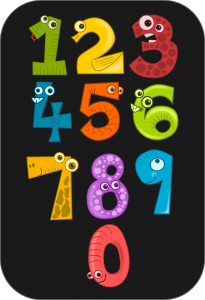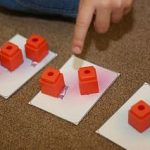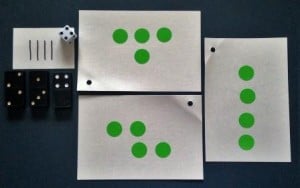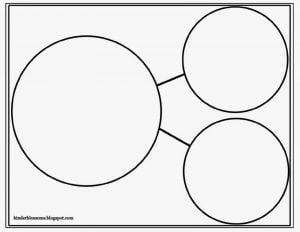by C. Elkins, OK Math and Reading Lady
To be able to add and subtract, students normally pass through several phases as they build readiness for these operations with numbers. As teachers, we know oral counting does not necessarily indicate an understanding of numbers and sets, just like reciting the alphabet doesn’t necessarily mean a child can recognize letters and sounds. Read ahead for freebies in the Part-Part-Whole section.
Numerical Fluency Continuum: There are 7 steps to numerical fluency. If a child gets stuck on any of these steps, it may very likely halt their progress. Hopefully children move through these by the end of 2nd grade, but many students beyond that level have a breakdown which is likely because they missed one of these stages. Can you determine which of these stages your students are in?
- One-to-one correspondence: The ability to count objects so each object counted is matched with one number word.
- Inclusion of set: Does a child realize that the last number counted names the number of objects in the set? A child counts 5 objects. When you ask how many, can they state “5.” If you mix them up after they just counted them, do they realize there are still 5?
- Counting on: If a child counts 5 objects and the teacher then puts 2 more objects for the child to count, do they start all over or continue counting from 5? 5 . . . 6, 7.
- Subitizing:
 Recognize an amount without physically counting (ie on dice, dot cards, fingers).
Recognize an amount without physically counting (ie on dice, dot cards, fingers). - More Than / Less Than / Equal To: Can a child look at two sets of objects and tell whether the second set is more, less, or equal to the first set. Can a child build a second set with one more, one less, or equal to the first set?
- Part / Part / Whole: Compose and decompose sets by looking at the whole and the parts that make up the whole.
- 7 is the “focus number”
- 1 and 6 are bonds of 7
- Unitizing: The child is able to move from counting by ones to count by sets / groups: fives, tens, etc.
Teaching and Assessment strategies for these stages:
One to One correspondence:
- Teach children to touch each item as they count.
- Move the item out of the way as it is counted so it doesn’t get recounted.
- Arrange the items to be counted in rows, rather than randomly scattered.
Inclusion of Set:
- The child counts objects outloud. When he/she is done, have the child say, “I have ___ objects.” The child can say the correct amount without recounting.
- With the child watching that you did not add or take any away, mix up the objects and ask the child, “How many?”
Counting On:
- Provide some objects for the student to count. Ask them, “How many?” Then slide over 1 or 2 more objects and ask the child, “How many now?” They should not have to recount from the beginning.
- For counting on with numerals, show a number to the student (such as 5). Ask them to start with 5 and keep counting til you say to stop. (5 . . . 6, 7, 8). Show a number line if needed.
Subitizing:
- Flash object(s) quickly such as dots on a card, dice, or domino, ten frame, fingers on a hand, etc. You can do this with individual students, small groups, or your whole class. Observe who is counting (finger pointing, head-bobbing, etc.) and who knows the amount immediately.
- Have the student share how they knew the amount. Look for patterns (such as 2 and 2 on a dice showing 4, or 4 dots with 1 in the middle on a dice showing 5).
- Show different configurations for the same number (4 in a straight line, 4 in a diagonal line, 4 in a random arrangement, 4 in a square arrangement, 4 in a T arrangement, etc.).
- Gradually build from the known to the new. (I recognize 6 when I see two rows of 3 dots.)
- Provide pictures and numerals for students to match. Observe to see if the objects are being counted or subitized.
- See my previous post on this topic. Click here: subitizing
More Than / Less Than / Equal To:
- Have the child build a set of objects (example: 5). Add one more and tell how many. Can they do it without recounting? This means they are counting on.
- Have the child build a set of objects (example: 5). Take one off and tell how many.
- Have the child build a set of objects equal to the current set. This shows one-to-one correspondence.
- Look at two sets of objects or pictures to tell whether the first set is more, less, or the same as the second set.
- Check the child’s understanding of conservation of number. To do this, arrange some objects in 2 equal rows (example: 4 cubes in two rows). The teacher points to each row and asks, “Does this row have more, does this row have more, or are they the same?”
- Then spread one row of the cubes apart while the child watches. Ask the same questions: “Does this row have more, does this row have more, or are they the same?”
- If the child believes the spread out row has more, ask them why they answered that way. Have them count to prove / disprove their answer.
- Watch this interesting conservation video. (Click on link). It may take a child til the age of 7 to achieve conservation on concepts of length, volume, etc.
Part / Part /Whole:
- Provide part/part/whole templates for the student to compose and decompose using manipulatives.
- Compose example: How many different combinations can you find for the number 5? (0 and 5, 1 and 4, 2 and 3, 3 and 2, 4 and 1, 5 and 0).
- Decompose example: Start with 6 in the “whole” section. Move some to each part and name the numbers representing each part. This is the concept of subtraction.
- These are called number bonds. See my number bonds post for more information and FREE number bond activities.

Unitizing:
- Use manipulatives to group objects in sets of 5 or 10.
- Place numbers on number lines.
- Recognize numbers on a 1-100 chart. Look for patterns.

